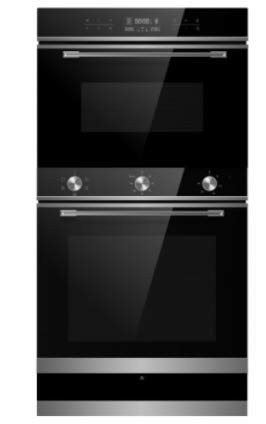Ovens And Hobs 101: It's The Complete Guide For Beginners

Understanding Ovens and Hobs: A Comprehensive Guide
Cooking has actually come a long method given that the days of open flames and fundamental cooking methods. Today, ovens and hobs are at the heart of modern-day kitchen areas, providing adaptability, efficiency, and an array of cooking alternatives. Whether you are a novice cook or a seasoned chef, understanding the differences, features, and functions of these home appliances is important for optimizing cooking potential. Hobs Sales breaks down the various kinds of ovens and hobs offered on the marketplace, their functionalities, and how to choose the ideal devices for your kitchen.
What is an Oven?
An oven is an enclosed area developed for heating and cooking food, using numerous techniques such as baking, roasting, and broiling. Ovens can be found in various types, each serving distinct cooking preferences and requirements.
Types of Ovens
Traditional Ovens:
- Use gas or electrical power for heating.
- Usually consist of a heating component at the top and bottom.
- Perfect for basic baking jobs.
Convection Ovens:
- Use a fan to flow hot air, promoting even cooking.
- Ideal for baking, roasting, and reheating.
- Lowers cooking time and boosts taste.
Steam Ovens:
- Utilize steam to cook food while maintaining moisture and nutrients.
- Outstanding for health-conscious cooking, such as vegetables and fish.
Microwave Ovens:
- Use electromagnetic radiation to heat food rapidly.
- Best for reheating leftovers or cooking easy meals.
Wall Ovens:
- Built into the wall, conserving area in the kitchen.
- Readily available in various setups, consisting of single or double ovens.
Secret Features of Ovens
- Temperature level Control: Precision heating for different baking and preparing procedures.
- Self-Cleaning Options: Some designs have self-cleaning modes that utilize heats to burn food residue.
- Smart Features: Wi-Fi connection permits remote pre-heating, monitoring, and recipe management via smart devices.
What is a Hob?
A hob is a cooking surface, frequently referred to as a range or cooktop, where cookware is put for heating. Hobs are offered in various products, sizes, and heating approaches, dealing with diverse cooking requirements.
Kinds of Hobs
Gas Hobs:
- Utilize burner for direct flame cooking.
- Offer accurate temperature control and are preferred by lots of expert chefs.
Electric Hobs:
- Use electric coils or smooth tops.
- Some models are geared up with induction technology, supplying fast heating through electromagnetic energy.
Induction Hobs:
- Cookware should be made of magnetic materials.
- Extremely energy-efficient, supplying fast heat and minimizing burn dangers.
Ceramic Hobs:
- Feature a glass-ceramic surface with heating elements beneath.
- Easy to clean but can be less energy-efficient than induction hobs.
Secret Features of Hobs
- Burner Configuration: Varies from 2 to 6 burners, depending upon design and size.
- Power Levels: Multiple settings permit higher precision in cooking.
- Safety Features: Options like flame failure gadgets and kid lock settings guarantee safety throughout cooking.
Selecting the Right Oven and Hob
Picking the best oven and hob for your kitchen involves cautious consideration of various elements. Below is a list of concerns to guide your selection procedure:
- What is your main cooking style?
- How much kitchen space do you have?
- What is your spending plan?
- Do you choose gas or electric devices?
- Are additional features like smart connection important to you?
Table Summary of Key Differences Between Ovens and Hobs
| Feature | Oven | Hob |
|---|---|---|
| Functions | Baking, roasting, broiling | Boiling, frying, sautéing |
| Cooking Method | Enclosed heat | Direct cooking surface area |
| Temperature Control | Adjustable settings | Stove settings |
| Types | Electric, gas, convection, microwave | Gas, electric, induction, ceramic |
| Cooking Capacity | Larger (can cook several meals) | Smaller (concentrate on instant cooking) |
| Cleaning | Self-cleaning alternatives available | Normally manual cleaning needed |
Maintenance Tips for Ovens and Hobs
Proper care and upkeep of your cooking devices extend their life-span and efficiency. Here are necessary maintenance tips:
Regular Cleaning:
- Clean the oven interior after each usage to prevent residue accumulation.
- Wipe down hob surfaces after cooking to avoid stains.
Inspect Seals:
- Ensure the oven door seals are undamaged to maintain energy effectiveness.
- Replace damaged gaskets and seals as needed.
Inspect Burners and Elements:
- For gas hobs, look for clogs in burners.
- For electric hobs, check coils and surfaces for indications of wear.
Frequently asked questions
Can I utilize any cookware on induction hobs?
- No, induction hobs only deal with magnetic pots and pans, such as cast iron or stainless-steel.
What is the most energy-efficient cooking home appliance?
- Induction hobs are normally the most energy-efficient option, utilizing less energy than conventional gas or electric designs.
How typically should I clean my oven?
- It's a good idea to clean your oven every few months, or more regularly if you use it frequently.
Can I install an oven and hob individually?
- Yes, both devices can be installed separately based on kitchen style and space.
What should I consider when setting up a gas hob?
- Guarantee proper ventilation and comply with regional safety codes. It is suggested to have a professional set up gas appliances.
Understanding the features, types, and maintenance of ovens and hobs can considerably improve your cooking experiences. Selecting the best appliances customized to your cooking style, kitchen area, and security requirements can make all the difference in achieving culinary success. By being notified about your choices, you can take pleasure in a more effective and enjoyable cooking journey, bringing scrumptious meals to your table with ease.

